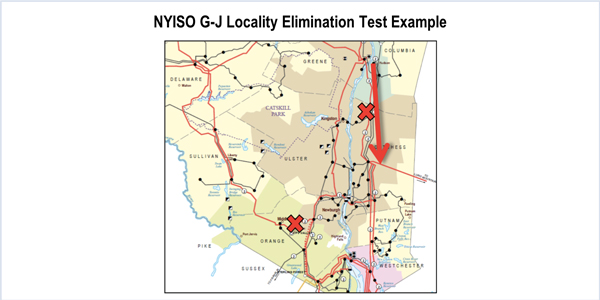RENSSELAER, N.Y. — NYISO’s Management Committee on Wednesday approved proposed rule revisions that would allocate day-ahead market congestion rent shortfalls and surpluses stemming from changes in transmission availability to the responsible transmission owner.
The measure, which would revise Attachment N of the ISO’s Tariff, will go to the Board of Directors for approval before a filing with FERC. The Business Issues Committee (BIC) recommended the proposal to the MC. (See “Day-Ahead Market Congestion Settlements,” NYISO Business Issues Committee Briefs: Feb. 14, 2018.)
At the Feb. 28 MC meeting, Operations Analysis and Services Supervisor Tolu Dina explained that the ISO’s proposed cost allocation methodology employs a de minimis threshold to determine when TOs are not allocated costs. The threshold applies to day-ahead constraint residuals less than $5,000, provided the sum of all such residuals falling below the threshold is not more than $250,000 or 5% of the sum of all day-ahead constraint residuals for the month.
Alternative Methods for Determining LCRs
The MC approved Tariff revisions to establish an alternative method for calculating locational minimum installed capacity requirements.
The revisions incorporate incremental changes recommended by stakeholders at the Feb. 6 Installed Capacity Working Group/Market Issues Working Group meeting, said Zachary Stines, NYISO associate market design specialist. (See “Alternative Methods for Determining LCRs,” NYISO Business Issues Committee Briefs: Feb. 14, 2018.)
Stines presented the new method for determining locational capacity requirements (LCRs) for localities, designed to minimize the total cost of capacity at the level of excess condition while meeting reliability criterion, maintain the installed reserve margin approved by the New York State Reliability Council and not exceed transmission security limits.

| NYISO
The ISO plan evaluates net energy and ancillary services revenue at different levels of installed capacity using data from the most recent of either the capability year after a quadrennial “demand curve reset” or the annual installed capacity update.
The Long Island Power Authority, NRG Energy and other stakeholders recommended sending the measure back to a working group for additional analysis. But other market participants countered that while a case can always be made for more analysis in a big project, the proposal — while imperfect — represents an improved approach for estimating requirements.
MC Rejects On Ramp/Off Ramp Changes
The MC rejected a market design proposal and related Tariff revisions that would have eliminated localities and revised the existing on ramp/off ramp rules to create a new locality.

| NYISO
The BIC rejected the same proposal on Feb. 14. (See “BIC Rejects On Ramp/Off Ramp Changes,” NYISO Business Issues Committee Briefs: Feb. 14, 2018.)
Zach T. Smith, NYISO manager of capacity market design, told the MC the proposed methodology is based on reliability planning principles developed to determine whether to create and eliminate localities.
The unique geographic nature of Zones J and K, encompassing New York City and Long Island, makes it difficult to site generation in those areas, which also confront distinct environmental issues, Smith said.
Mark Younger of Hudson Energy Economics reiterated the objections he made at the BIC meeting earlier in the month, calling the market design proposal — and NYISO’s review process — “flawed.”
BIC Chair Erin Hogan said NYISO received about 10 letters of support for the capacity market design from members of the public, the first time she recalled such a response. The letters will be posted on the ISO’s website.
— Michael Kuser


